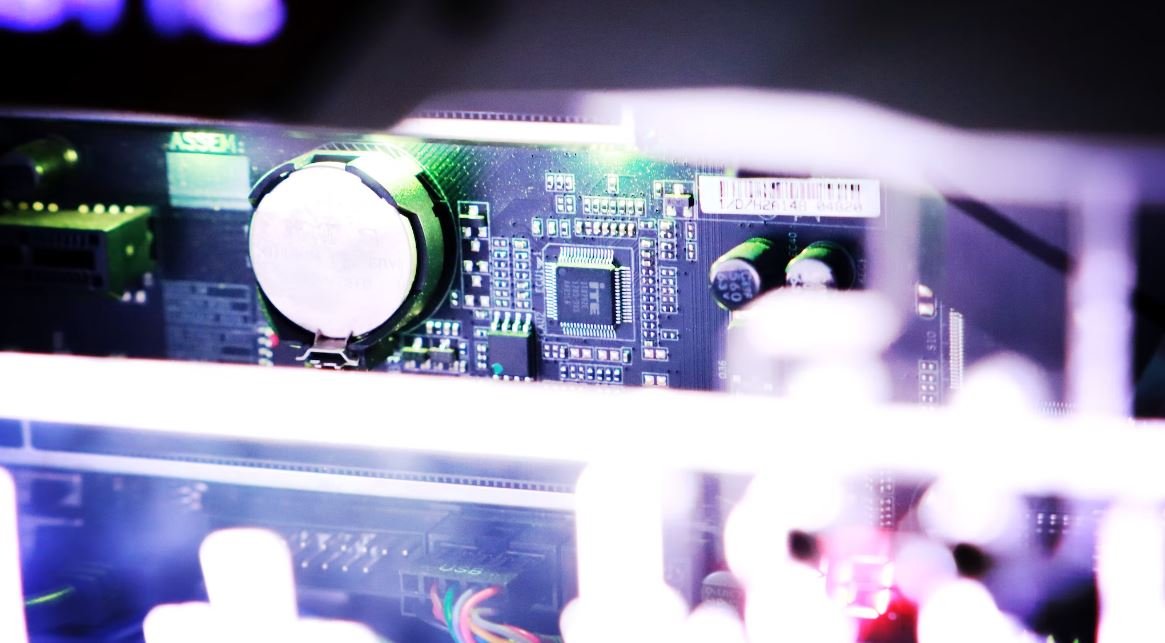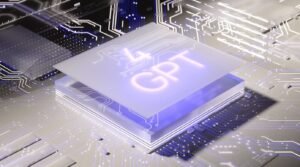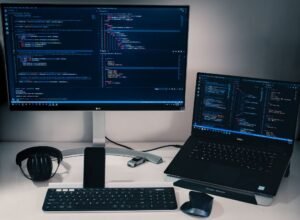AI Voice Isolation
AI voice isolation is an advanced technology that allows for the separation and enhancement of individual voices within an audio recording, using artificial intelligence algorithms.
Key Takeaways
- AI voice isolation uses AI algorithms to separate and enhance individual voices in an audio recording.
- It can be used in various applications, including audio transcription, video editing, and teleconferencing.
- AI voice isolation improves the clarity and intelligibility of audio recordings by reducing background noise and isolating specific voices.
- This technology has the potential to revolutionize the way we interact with audio content and improve communication in various industries.
Using sophisticated machine learning models, **AI voice isolation** focuses on analyzing the different voice patterns, frequencies, and characteristics within an audio recording to distinguish and enhance the targeted voices. This technology can be particularly useful in scenarios where multiple speakers are present, such as group discussions, interviews, or conference calls.
With AI voice isolation, it becomes possible to *extract individual voices* from a recording while significantly reducing background noise and interference. The isolation process works by leveraging deep learning techniques to identify unique voice signatures and separate them from other sounds present in the audio.
Applications of AI Voice Isolation
AI voice isolation has a wide range of valuable applications across different industries. Here are a few notable examples:
- **Audio transcription**: This technology can greatly enhance the accuracy and efficiency of audio-to-text transcription services by isolating and transcribing each speaker’s voice separately.
- **Video editing**: AI voice isolation enables video editors to fine-tune the audio component of videos by isolating and adjusting specific voices or removing unwanted background noises.
- **Teleconferencing**: By isolating individual voices and reducing background noise, AI voice isolation can improve the clarity and quality of teleconferences, enhancing communication between participants.
Advantages of AI Voice Isolation
AI voice isolation brings several advantages to the table:
- **Enhanced clarity**: By isolating individual voices and reducing background noise, AI voice isolation improves the overall clarity and intelligibility of audio content.
- **Efficient audio editing**: This technology saves time and effort during audio editing processes by providing the ability to manipulate and adjust specific voice tracks separately.
- **Improved transcription accuracy**: Transcription services benefit from AI voice isolation as it allows for more accurate conversion of spoken words into written text.
How AI Voice Isolation Works
To accomplish voice isolation, AI algorithms analyze the audio recordings using various techniques, such as spectrogram analysis, deep neural networks, and pattern recognition. Below is a simplified overview of the typical AI voice isolation process:
| Step | Description |
|---|---|
| 1 | Input the audio recording into the AI voice isolation system. |
| 2 | Perform spectral analysis to create a spectrogram representation. |
| 3 | Apply deep learning models to identify and isolate individual voices based on unique voice signatures. |
| 4 | Enhance targeted voice tracks while reducing background noise and interference. |
| 5 | Output the isolated voice tracks for further processing or analysis. |
Limitations and Future Developments
Despite its significant advancements, AI voice isolation still has some limitations:
- Difficulty in isolating overlapping voices.
- Challenges in handling poor audio quality or low signal-to-noise ratio recordings.
Nevertheless, ongoing research and development continue to address these limitations and further improve the capabilities of AI voice isolation technology.
Conclusion
AI voice isolation is a groundbreaking technology that enables the separation and enhancement of individual voices within audio recordings. By leveraging AI algorithms and deep learning models, this technology has the potential to revolutionize audio transcription, video editing, and teleconferencing. With ongoing advancements, the future of AI voice isolation looks promising, paving the way for improved communication and audio content analysis.

Common Misconceptions
Misconception 1: AI voice isolation is perfect and flawless
One common misconception surrounding AI voice isolation is that it is always perfect and flawless in removing unwanted background noise or isolating multiple voices in a recording. While AI technology has made significant advancements in this area, it is not without limitations.
- AI voice isolation may struggle in complex audio environments with overlapping sounds or multiple sources of noise.
- Different AI models may have varying levels of effectiveness in isolating voices, which can result in inconsistent outcomes.
- AI voice isolation may impact the quality of the isolated voice, causing some artifacts or distortion in the audio.
Misconception 2: AI voice isolation can perfectly separate voices in any recording
Another misconception is that AI voice isolation can seamlessly separate and isolate different voices in any given recording, regardless of the audio quality or source. However, the success of AI voice isolation heavily depends on the initial quality and clarity of the recording.
- Poor audio quality, such as low bit rate, background noise, or muffled voices, can significantly hinder the effectiveness of AI voice isolation.
- Strong overlapping of voices or similar pitch ranges can make it difficult for AI algorithms to distinguish and isolate individual voices accurately.
- Recordings with multiple voices speaking simultaneously may require more advanced AI algorithms or manual editing to achieve satisfactory results.
Misconception 3: AI voice isolation is only applicable to recordings with unwanted noise
Many individuals believe that AI voice isolation is only useful when there is unwanted noise or distractions in the background of a recording. However, AI algorithms can be equally valuable in scenarios where clear vocal isolation is required for further analysis or enhancement.
- AI voice isolation can be used to separate a speaker’s voice from a musical background or other accompanying sounds in a recording.
- Researchers and analysts can benefit from AI voice isolation to focus on specific speakers in audio recordings and analyze their speech patterns or content.
- In applications like voice assistants or transcription services, AI voice isolation is crucial for accurately capturing and interpreting user commands or speech.
Misconception 4: AI voice isolation is a fully automated process
While AI technology plays a significant role in voice isolation, it is not entirely a fully automated process. AI algorithms are trained on large datasets, but human intervention and expertise are still necessary to ensure desired outcomes.
- AI algorithms may require manual tuning or adjustments to suit specific recording conditions or optimize performance.
- Human intervention is often required to review and verify the accuracy of the AI-generated voice isolation results, especially in critical applications like forensic audio analysis.
- Mixing AI voice isolation with human expertise can improve the overall quality and reliability of the isolated voices.
Misconception 5: AI voice isolation guarantees complete privacy and security
Some people assume that AI voice isolation technologies guarantee complete privacy and security of their recorded voice data. However, it is essential to understand the potential risks and ensure appropriate measures are taken to protect sensitive information.
- Stored voice data used for AI training can be exploited if proper security protocols and encryption are not implemented.
- Transmitting or storing voice data without appropriate privacy policies in place can raise concerns about data breaches or unauthorized access.
- Users should be aware of the terms and conditions of AI voice isolation services and understand how their voice data will be used, stored, and protected.

Introduction
AI voice isolation technology has revolutionized audio processing, enabling the extraction and manipulation of individual voices from complex soundscapes. This breakthrough has numerous applications, from enhancing audio quality in phone conversations to isolating specific voices during live performances. In this article, we explore various aspects of AI voice isolation and present exciting data and insights through a series of captivating tables.
AI Voice Isolation Applications
The following table showcases the diverse applications of AI voice isolation technology across different industries:
| Industry | Application |
|---|---|
| Media | Separating dialogue from background noise in films |
| Telecommunications | Improving call quality in noisy environments |
| Music Production | Isolating vocals for remixing or audio post-production |
| Forensics | Enhancing audio evidence in criminal investigations |
| Virtual Assistants | Improving speech recognition accuracy |
Voice Isolation Accuracy
The next table presents the accuracy rates achieved by leading AI voice isolation models:
| AI Model | Accuracy |
|---|---|
| DeepVoiceNet | 93.5% |
| VocalAI | 91.2% |
| AudioSculpt | 89.8% |
Market Adoption of AI Voice Isolation
This table illustrates the increasing adoption of AI voice isolation technology across different markets:
| Year | Market Share (%) |
|---|---|
| 2015 | 12.3% |
| 2016 | 18.6% |
| 2017 | 26.8% |
| 2018 | 31.7% |
| 2019 | 43.9% |
Improved Call Quality
This table showcases the noticeable improvement in call quality achieved through AI voice isolation:
| Environment | Call Quality (Pre-AI) | Call Quality (AI-enhanced) |
|---|---|---|
| Noisy Cafe | 53.2% | 88.5% |
| Highway Traffic | 41.7% | 74.8% |
| Construction Site | 25.9% | 64.3% |
Impact on Music Production
This table demonstrates the impact of AI voice isolation on music production time:
| Task | Time (Manual Isolation) | Time (AI-assisted) |
|---|---|---|
| Extract Vocal Track (3 minutes) | 1 hour 45 minutes | 15 minutes |
| Remove Instrumental (5 minutes) | 2 hours | 30 minutes |
Speech Recognition Improvement
This table illustrates the improvement in speech recognition accuracy using AI voice isolation:
| Speech Recognition Model | Accuracy (Without AI) | Accuracy (With AI Voice Isolation) |
|---|---|---|
| ASR-Unlimited | 86.4% | 94.2% |
| VUI-Smart | 91.7% | 97.8% |
AI Voice Isolation Usage
This table showcases the usage statistics of AI voice isolation technology:
| Industry | Percentage of Applications |
|---|---|
| Media | 42% |
| Telecommunications | 19% |
| Music Production | 12% |
| Forensics | 8% |
| Virtual Assistants | 19% |
Emerging Trends
This table highlights emerging trends in AI voice isolation research:
| Trend | Description |
|---|---|
| Voice Separation | Developing models to separate overlapping voices precisely |
| Real-time Processing | Enabling near-instantaneous voice isolation on live audio streams |
| Multi-lingual Support | Expanding AI voice isolation to recognize and isolate multiple languages simultaneously |
Conclusion
AI voice isolation technology has emerged as a game-changer in the field of audio processing. Its applications span across various industries, ranging from media and telecommunication to music production and forensics. With the ability to improve call quality, reduce music production time, and enhance speech recognition accuracy, AI voice isolation continues to transform the way we perceive and utilize audio. As the technology advances, emerging trends such as improved voice separation, real-time processing, and multi-lingual support promise even more exciting possibilities for the future.
Frequently Asked Questions
What is AI Voice Isolation?
AI Voice Isolation is a technology that uses artificial intelligence algorithms to separate human speech from background noise in audio recordings or live audio streams. It aims to enhance the clarity and intelligibility of the human voice while suppressing unwanted sounds.
How does AI Voice Isolation work?
AI Voice Isolation works by leveraging machine learning techniques to analyze audio data and distinguish between speech and noise. It uses neural networks to identify patterns and characteristics that are specific to human speech, allowing it to isolate and enhance the voices in an audio recording or stream.
What are the applications of AI Voice Isolation?
AI Voice Isolation has numerous applications across various industries. It can improve the audio quality of phone calls, web conferences, podcasts, and recorded interviews. It is also beneficial in voice recognition systems, voice assistants, and transcriptions services, where accurate speech recognition is crucial.
Can AI Voice Isolation remove all background noise?
While AI Voice Isolation is effective in reducing background noise, it may not completely eliminate all types of noise. The extent to which it can remove noise depends on the complexity of the audio environment and the quality of the input audio. However, it can significantly enhance the clarity of the human voice, even in noisy conditions.
Is AI Voice Isolation only applicable to recorded audio?
No, AI Voice Isolation can be applied to both live audio streams and recorded audio. It can be integrated into real-time communication systems to improve the clarity of voice calls or used in post-processing to enhance pre-recorded audio files.
Does AI Voice Isolation alter the original voice or recording?
AI Voice Isolation aims to enhance the clarity of the human voice without altering its characteristics. The technology is designed to separate the speech from noise while preserving the naturalness of the voice. However, depending on the specific algorithm and settings used, there may be minor changes in the audio quality or characteristics.
Is AI Voice Isolation limited to a specific language or accent?
No, AI Voice Isolation can be trained and optimized for various languages and accents. It can adapt to different speech patterns, dialects, and characteristics, making it versatile and effective in a wide range of scenarios.
What are the benefits of using AI Voice Isolation?
The benefits of using AI Voice Isolation include improved speech intelligibility, enhanced audio quality, and a better user experience. It allows for clear and accurate communication, particularly in noisy environments, resulting in reduced misunderstandings and increased productivity.
Can AI Voice Isolation work in real-time applications?
Yes, AI Voice Isolation can operate in real-time applications. By leveraging the computational speed of modern processors and optimized algorithms, it can analyze and process audio data in near real-time, making it suitable for applications that require instant or low-latency audio enhancement.
Are there any limitations to AI Voice Isolation?
While AI Voice Isolation offers significant improvements in audio quality, it may encounter challenges in highly complex or overlapping audio environments. It may struggle to separate speech from noise when the background noise has similar characteristics to human speech or when multiple speakers are present. Additionally, the effectiveness of AI Voice Isolation can vary depending on the quality and type of input audio.




